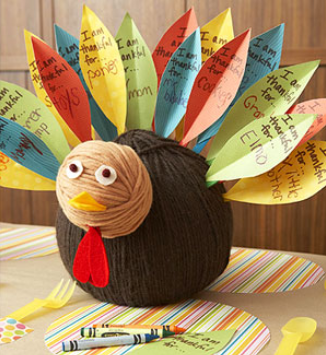One of my favorite quotes is from John Adams, who wrote,
"I long for the rural and domestic scene, for the warbling of birds and the prattling of my children."
Much is revealed with this tender sentiment. It's clear that what he holds dear and appreciates
most in his life are the simple things. He's not longing for wealth, fame, or material goods, but
the simple pleasures of home, nature, and family. I love this quote because it is rich with
appreciation.
What do you appreciate? What are you thankful for? Thanksgiving is the traditional time of
year when folks express gratitude for the blessings in their lives. Families and friends gather to
share a feast, and many families will partake in the tradition of taking turns expressing what
they are grateful for. Young and old, the whole family participates. This practice teaches and
encourages gratitude, and also helps to create and strengthen family bonds and traditions.
The practice of outwardly expressing thankfulness is a chance to recognize and share the
things in our lives that we sometimes take for granted every day. It's a time to reflect on what
we have. For instance, I am most thankful for my children, my health, my friends and family,
and my abilities. I am thankful for freedom, and for the laughter of my children. I am thankful
that you are reading this right now.
A Thankful Tree is the perfect way to encourage thankfulness!
This project consists of a table-top sized natural tree branch "tree" that you can easily create.
Family members write what they are thankful for onto paper "leaves", and hang them on the
tree. This project is a valuable way to teach children (and adults!) to remember to express
gratitude. Display your finished Thankful Tree in your home as a holiday centerpiece, and
remember, the tree isn't only for families. Be sure to offer each guest who enters your home
the opportunity to add a leaf to the tree.
Materials
vase, jar, or other container of suitable size to hold and support your tree
optional: stones, sand, or acorns to weight the vase and support the tree
Instructions
1. Place tree branch into vase. If support is needed, add stones, acorns, or sand to the vase to help weight the vase and support the tree. If you're using more than one branch for your tree,consider tying the branches together near the bottoms with twine.

2. Cut a variety of 1-2" leaves from paper. Plain paper is fine. Or, you can also use colored construction paper or fancy scrapbook paper. I simply cut them freehand, using a simple oval shape. I also cut my leaves is varying sizes and widths. I figured, though we are a family, we are still all unique, and I reflected that with the varying sizes and shapes of my leaves.
3. Make a small slit at the end of each leaf and thread a 3-4" length of string onto each leaf.
4. Have family members write something that they are thankful for onto a leaf and hang it on the tree.
The Thankful Tree is not just for Thanksgiving! Giving your tree a permanent place
in your home can help remind your family that thankfulness should be felt and
expressed year-round.
Here are a few ideas for Thankful Tree variations:
Thanksgiving - Use autumn colored papers for the leaves.
Christmas or Winter - Use holiday colored paper for the leaves. For a wintry tree, paint
the branches with white spray paint.
New Year - Paint the branch with silver spray paint for a festive look. Decorate leaves
on one side with glue and silver glitter.
Birthdays - Coordinate the tree and or leaves to the birthday theme colors. Because birthdays are a time to celebrate and individual, have guests write why they are thankful for the birthday girl or boy onto the leaves.
What are you thankful for?
This post is part of BlogHer's Holiday Parties editorial series, brought to you by Cracker Barrel.
 If you would like help creating inspirational spaces for yourself contact us!
If you would like help creating inspirational spaces for yourself contact us!

























































